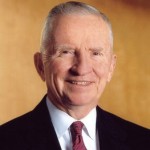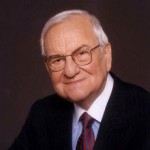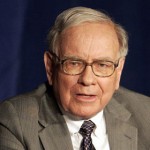History is filled with examples of linkages between networking, mentoring and innovation, but over the centuries the knowledge acquisition ecosystem has changed considerably. There was a time when this process was slow and rooted in tacit knowledge, but as the needs and wants of society progressed and evolved, the process became more refined—moving faster— and rooted in the exchange of explicit knowledge.

TACIT KNOWLEDGE – SHOW ME!
Regrettably, as society and technology continue to explode at a pace that stretches Moore’s law, it translates to the current knowledge acquisition ecosystem being broken; in fact, we may be at risk of losing a generational exchange of knowledge and innovation.
Following is a fast-paced tour through related history, plus a prescription for 21st century mentoring, networking and innovation.
IN DAYS OF YORE
Centuries ago, the path to gainful employment often required apprenticeships. If you wanted to learn a trade, you had no other option: you needed to find somebody who was already doing it.
Through practice and much coaching—especially if it involved tacit knowledge—you could eventually master a particular craft or art. This was a one-to-one relationship that benefited both the master and the student. Students learned a trade that would serve them for life, and masters acquired young, cheap talent to keep their businesses alive. If you wanted to learn a trade, you had to find a person who was willing to teach you how to do it. And, if you were lucky, the master provided you with paid employment at the end of your apprenticeship.
In this type of direct one-on-one learning process, a master could only have a limited number of apprentices at any one time. This not only limited the ability of the master to educate the masses in their skill, but it also limited the ability of the young student to ask questions or bring new ideas to a wide audience.
While the collaborative sharing of knowledge occurred, the resulting by-product—innovation—was a slow process measured in decades, not years or months.
THE AGE OF MASS

EXPLICIT KNOWLEDGE RULES
During this period, the master/student apprenticeship process evolved into—particularly at the management level—a mentorship process. The master/student relationship remained intact, but it became less about passing along tacit knowledge and fundamental skills and more about the refinement and guiding of the student’s careerpath.
Throughout this revolutionary period, the one constant in the apprenticeship and mentorship processes was that both the master and the student benefited from the relationship. It was a two-way street that helped advance both experienceand new ideas.
In essence, it helped foster innovation.
THE NEXT “NEXT”
In the 21st century, we’ve shifted into a post-industrial, information-based economy that once again has resulted in a requirement for both educational change and a shift in the type of workforce required. Unfortunately, some things have changed (not necessarily for the better) along the way; namely:
- the master/student mentorship process quickly is becoming a casualty of the global availability of information; and
- there is a shift in the way society learns and how we reinforce our decisions.
THE “HYPER-CONNECTED” GENERATION
Technology, pervasive communication and the global availability of “any information everywhere” have had a negative impact on the state of mentorships.

Photo of sign at Newton-Lee Elementary School in Ashburn, Virginia by Fred McClimans.
Twenty years ago we had a culture where peers still relied upon personal face-to-face (or voice-to-voice) real-time communications. As we “graduated up” from high-school to university or college, we were introduced to a new level of peers and potential teachers/mentors. As we left our institutions of higher education and moved into the work-force, each new job opportunity brought with it a “new” level of contacts.
This change in contacts and peers wasn’t necessarily by choice. It was a by-product of the way we communicated and the limitations that geography placed upon our network of “on-demand” peers.
Today’s generation (some may call it Gen Y or Millennials—we’ll use the phrase “hyper-connected” here) faces an interesting conundrum:
As they move from high-school into the work-force, the hyper-connected still encounter the same “new contact” opportunities as their predecessors. The complication is they also bring with them a collection of trusted peers, with whom they remain connected through pervasive communications.
As a “trusted” group, and taking into account peer pressure, it is no surprise they rely heavily on this group of peers when it comes to making lifestyle or career decisions. Rather than seek out the advice of those with experience in their new-found field of employment, the hyper-connected often are likely to seek the counsel of their long-term friends.
This may fill the need the hyper-connected have to gain confirmation or acceptance of their plans, but it diverts their attention from the value that an outside advisor or mentor can bring to the equation.
THE NEED TO MENTOR
Why do we mentor others? Like parenting, it’s motivated by both selfish and selfless aspirations.
We want to:
- Bestow on others our own knowledge;
- Give them the opportunity both to work with us and for us; and
- Pass along our collective experience to those who we trust to continue our legacy.
At the same time, we recognize they may become our peers or even our competition—something that both forces us toraise our game to the next level and challenges us to find innovative solutions to win the game.
Where does this innovation come from? The innovation comes from the exchange of ideas with those we mentor.
WHY NETWORKING IS KEY TO LEVERAGING MENTORING
It’s often been said that it is not what you know but who you know. Today, more than ever, people recognize the value of diversity of opinion. We also recognize that a person need not have just one mentor and that mentorship needs—and mentors—may change over time; ultimately, helping to form a group of trusted advisors.
How do you accommodate this?
Mentoring is part of a larger ecosystem of networking. It requires you to reach out of your comfort zone to find those who are “where you want to be.” Unfortunately, too many people are afraid to—or don’t feel the need to—truly network and reach out to establish these long-term beneficial relations.
Simply reaching out online to ask an experienced person a question, or asking for a limited piece of advice, isn’t true networking. It often results in answers that lack context.
What many of today’s younger generation fail to realize is that networking isn’t about:
- following people;
- commenting on a blog; or
- asking a question from a person with whom you haven’t built a relationship of trust.
While the old axiom “you may find that the most successful people make the most effective mentors” still applies, it has taken on a new meaning in the digital era. It isn’t about how many people you follow or how many people follow you, buthow many personal relationships you cultivate through your online community.
TOMORROW’S WORKFORCE
As we migrate from a world driven by process to one focused on innovation and problem-solving, we see the benefits of both data-driven components and experiential/tacit knowledge—something that is ideally suited to the:
Internship > Mentorship > Employment Model
As we create new professions (community managers didn’t exist a decade ago), we find that traditional education falls short in preparing candidates with the requisite skills and mindset to be successful.
Today’s questions are now:
- “How do we bridge that gap?”
- “How do we cross that functional/educational divide?”
The answers are that we—collectively—need to reach out proactively to schools and to students in the early stages of their careers. We need the hyper-connected to:
- Think analytically; and
- Evaluate events and circumstances and make the most effective and positive decisions they can.
And we need to:
- Push them towards internship programs that foster and grow this critical skill set; and
- Ultimately, lead them to mentorship programs that offer opportunities and provide for the mutual exchange of knowledge and ideas that lead to innovation.
THINGS THAT MAKE YOU GO “Hmmm…”
We invite you to ponder this mental checklist:
- Are you reaching out to your local college or university community (or your summer student base) and offering internships that make a difference?
- Are you willing to both educate and learn from your interns?
- Do you realize the value (both for your organization and children) of helping the next generation of leaders benefit from your experience (careful – this requires a time commitment…)?
- Are you willing to openly give to those that you mentor, allowing them the opportunity to learn from you, work for you and perhaps even compete against you?
If the answer to any of the above is yes, you are one step ahead of your competition.
This post, co-authored by Alan Berkson with Fred McClimans, originally appeared on October 2, 2011 in PR Conversations. It has been reprinted and updated here.
Alan Berkson is a principal at the Intelligist Group in New York, USA, where he focuses on helping businesses move past blockages, leverage unidentified or underused assets, and identify opportunities for growth. He provides provocative commentary and theories on a variety of business strategy topics on his blog, The Intelligent Catalyst. Connect with him on Twitter, Google+ and LinkedIn.
Fred McClimans is the managing director of the McClimans Group in Washington, DC, USA, where he focuses on helping businesses improve their strategic business influence and find creative ways to drive their market from a proactive perspective. Read his blog at fredmcclimans.com. Connect with him on Twitter, Google+ and LinkedIn.
Together, Alan and Fred are working on 2020F, a global community being built to identity, track and trend disruptive events that have the potential to influence long-term change in both related and tangential markets, including developing actionable solutions to both minimize the risk and maximize the opportunity of current and future disruptive events.
 Earlier this week, my good friend Margie Clayman wrote an excellent post titled “Myth: Community makes the world go round” – it’s well worth the read as she raises some interesting points regarding the real value of a business-built community, and its failures if it doesn’t lead to community members actually driving revenue for the business. There is a difference between a business “community” and a “loyal customer base”.
Earlier this week, my good friend Margie Clayman wrote an excellent post titled “Myth: Community makes the world go round” – it’s well worth the read as she raises some interesting points regarding the real value of a business-built community, and its failures if it doesn’t lead to community members actually driving revenue for the business. There is a difference between a business “community” and a “loyal customer base”.
























